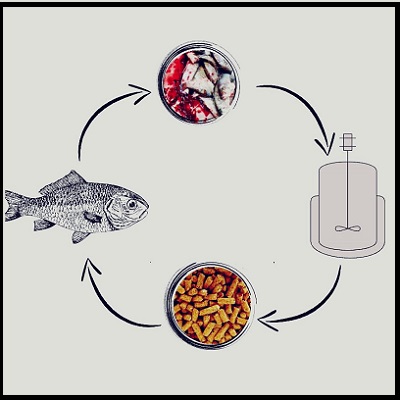Obtaining biological silage from lactic fermentation of fish waste
DOI:
https://doi.org/10.24054/bistua.v21i2.2410Keywords:
Aquaculture; Biotechnology; Nutrition; Fish.Abstract
Fish waste, when used as raw material, is considered a valuable byproduct due to its nutrient content, and through transformation processes, it can help prevent environmental pollution. The waste generated from fishing activities is not adequately treated in terms of its final disposal, which contributes to environmental contamination. Additionally, these waste materials are not used rationally due to a lack of knowledge regarding the applicable technological processes for utilizing the byproducts generated on a daily basis. This study aims to characterize and utilize these agro-industrial waste materials in the production of biological silage. The objective of this research was to obtain biological silage using fish waste in Gamarra (Cesar). An experimental factorial design of 2 x 3 was employed, with the first factor being the carbon source (molasses) at two levels of 12% and 18%, and the second factor being the fermenting agent, which utilized yogurt at three levels of 6%, 11%, and 15%. These factors were evaluated at a confidence level of 95% (P<0.05), resulting in six treatments with four replications each (24 experimental units). The mixtures obtained were placed in plastic reactors and kept at room temperature for 15 days, with pH and acidity levels monitored throughout the experiment. After this period, the silage was subjected to hot air drying. The final product exhibited protein levels ranging from 32% to 43% and fat content ranging from 19% to 33%. Microbiological analysis confirmed the product's safety as animal feed, making it suitable for consumption.
Downloads
References
FAO. (2020). The State of World Fisheries and Aquaculture. Rome: Food and Agriculture Organization of the United Nations.
Minagricultura. (2021). Sector Pesquero y Acuícola en Colombia. Bogotá: Ministerio de Agricultura y Desarrollo Rural.
García-Sifuentes, C., et al. (2020). “Characterization of Fish Waste for the Development of Sustainable Aquafeed.” Journal of Aquaculture Research and Development, 11(3), 1-5.
Lúquez-Pérez, Y., & Hleap-Zapata, J. (2020). “Fishery Waste in Colombia: Status and Potential Uses.” Journal of Fisheries and Aquatic Science, 15(1), 23-31.
Gomez, J., et al. (2014). “Evaluation of Different Silage Additives in Ensiling Sardine Wastes for Animal Feed.” Animal Feed Science and Technology, 188, 65-72.
Lúquez, Y., & Hleap, J. (2020). “Fish Silage: An Alternative to Manage Fishery Waste in Colombia.” Journal of Fisheries and Aquatic Science, 15(2), 46-54.
Yamada, Y., et al. (2000). “Silage Fermentation Characteristics of Fish Waste.” Journal of Applied Microbiology, 88(3), 445-449.
Perea, S. (2017). “Elaboración de ensilado de pescado: Una alternativa para la conservación de desechos o subproductos del pez.” Revista de Ciencia y Tecnología, 3(2), 50-60.
Abimorad, E. G., Naves, L. P., & Oliveira, R. P. (2009). Caracterização de iogurtes com culturas probióticas comerciais. Revista do Instituto de Laticínios Cândido Tostes, 64(6), 371-377.
Carreño, A. L., & Hurtado, A. F. (2017). Métodos de análisis microbiológicos para alimentos. Pontificia Universidad Javeriana.
NTC 282:2002. (2002). Productos alimenticios. Determinación de nitrógeno (método de kjeldahl) y cálculo del contenido de proteína.
NTC 529:2009. (2009). Alimentos para animales. Determinación de humedad.
NTC 668:1973. (1973). Alimentos. Determinación de la fibra cruda. Método gravimétrico.
McGrath, J. M., Naeem, A., & Coleman, J. G. (2016). The effect of fermenting corn with Lactobacillus plantarum, Lactobacillus buchneri, and Lactobacillus fermentum on feed intake, digestibility, and weight gain in dairy heifers. Journal of Dairy Science, 99(5), 3712-3720.
Hernández Sampieri, R., Fernández Collado, C., & Baptista Lucio, P. (2014). Metodología de la investigación. McGraw-Hill.

Additional Files
Published
Versions
- 2023-12-12 (3)
- 2023-08-30 (2)
- 2023-07-31 (1)
Issue
Section
License
Copyright (c) 2023 © Autores; Licencia Universidad de Pamplona.

This work is licensed under a Creative Commons Attribution-NonCommercial-NoDerivatives 4.0 International License.
© Autores; Licencia Universidad de Pamplona





